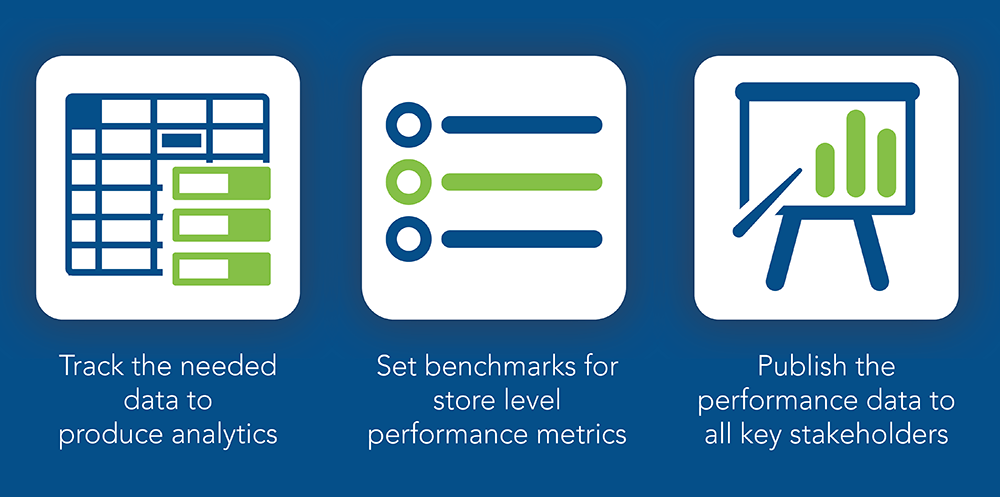Retailers: Are You Under-Managing Your Voice Channel?

As brick-and-mortar retailers expand their web-based operations, the in-store “voice sales channel” is often overlooked and undermanaged. But are you missing an opportunity to leverage your physical store operations in ways that will create a competitive advantage through a differentiated customer experience and lower operating costs? Why spend millions on web and TV ads only to lose a sale as a result of a poorly handled call from a customer to your local store?
Using Voice Channel Analytics to Drive Store Performance and Improve Sales
Despite the continued growth of online shopping, the fact is customers are still calling. In fact, in many cases, the number of calls into a store is actually increasing as shoppers on the go use their mobile phones to call ahead for availability of or to price-compare items they’re looking for. While retailers scour their web channel analytics for ways to improve the online customer experience and sales, when it comes to managing their voice sales channel, most retailers fail miserably at monitoring and managing critical call metrics, such as who is calling their store(s), what departments are they calling and how well are those calls being handled? As a result, it’s easy to imagine across a large chain of retail stores the sheer scale of sales and customer loyalty opportunities being squandered.
How well is your voice sales channel performing? If you don’t have an evidence-based answer to that question, then you’re likely leaking sales, frustrating customers and damaging your brand… day in, day out. Many retailers lack even the most basic data needed to produce critical business intelligence that would allow them to proactively manage the voice sales channel. This is often because their older communications systems lack the capability to produce the necessary call data/metrics. Ongoing measurement of daily business processes and workflows is an essential element in driving solid, predictable business performance. The lack of business intelligence around store-level voice channel performance, therefore, is a gaping hole in many retailers’ strategies to drive sales, ensure customer retention and improve the shopper experience.
3 Minimums to Maximize Your Voice Sales Channel

Retailers can take many steps to reduce friction and provide more seamless integration between their web and store operations, thereby providing a more seamless and enjoyable service experience. As a minimum, here are the basics of voice channel business intelligence and management every retailer should know and follow:
- Produce the needed analytics that will allow you to effectively manage your voice channel by tracking:
- How many calls are we getting into each store? When is the call volume heaviest?
- What are our customer call hold times? What are our customer call abandon rates?
- How many customer calls are going to each department within the store? How do individual departments perform in answering calls?
- Set benchmarks for desired store level performance metrics. If possible, integrate performance measurement of these metrics into your balanced scorecard for store management compensation.
- Publish the performance data daily, weekly and monthly in various formats to all key stakeholders, from the CEO all the way down to individual department-level managers within each store, and to all district and regional-level management in between.
Once retailers get a handle on the basics, they can start taking more sophisticated, value-added steps to improve and further differentiate the operation of their voice sales channel, such as:
- Using “click to call” capabilities (or chat/text) right from your website so shoppers can reach individual departments within their “home store”.
- Creating special call handling for VIP or loyalty program shoppers.
- Load balancing call volume among stores and/or call centers to avoid losing customer calls and potential sales.
- Delivering targeted on-hold or in-queue messaging at the store level, based on who’s calling and what department they called. (Advanced analytics can then be produced that map targeted on-hold messaging with POS data to prove out which messages work to positively impact sales.)
The Bottom Line
Treating inbound customer calls as a critical sales and customer service channel can help retailers improve the overall buying experience, drive sales and help secure customer loyalty. At the end of the day, the store is a call center, serving as a potential “needle moving,” voice-based selling channel in almost constant conversation with your customer base.Vertical Communications provides complete voice, data, BI and analytics solutions to some of the largest retailers in the U.S. To find out why they chose our Wave IP Communications Platform and Retail Applications Suite, please visit our Retail Solutions page.



